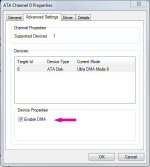Maybe this is a stupid question, but WHY do you want to use PIO mode for cloning a SATA drive? Technically, SATA drives use DMA for all data transfers, even PIO commands. Putting a BIOS in IDE mode allows a simulation to the OS to be able to work with the drive as a PATA drive, but all data transfers between the motherboard and the drive are still DMA. Using PIO mode with the BIOS in IDE mode for cloning a SATA drive would be kind of like towing your car behind a bicycle, not very productive and slow going.
And by the way, a SATA drive does not care at all what PIO mode or DMA mode it is in when it comes to transfer speed. SATA drives operate natively as AHCI, and I can image a SATA drive with BIOS set to AHCI with PIO read commands at the same speed as with DMA read commands. SATA transfer speeds are set by the SATA version, 1.5Gbs, 3Gbs, and 6Gbs for the current version respectively.
As for the questions asked in the HDDSuperClone thread, yes, HDDSuperClone can use PIO mode. But in the free version it is only enabled in the Direct IDE mode (DMA is actually not available in the free version for the direct modes), meaning your bios must be set for IDE. In my personal (to be the Pro) version, PIO mode can be set for the reads. But it does not make any changes to the OS. I use something other than the standard OS read commands when accessing the disks. Even the passthrough modes are much more direct than ddrescue reads. The direct IDE and AHCI modes talk to the drives directly, well, as directly as possible from the OS. I actually bypass the OS driver.

